
The Complete Guide to Climbing Kilimanjaro in 2024-2025
Ultimate Kilimanjaro Climbing Guide 2024-2025
Kilimanjaro towers at 5,895 m/19,340 ft above sea level. It is the highest free standing mountain in the world and the "Roof of Africa".
Mt Kilimanjaro is one of the most popular travel attractions on the continent. Over 40,000 people visit it every year. The reasons for its popularity are simple. It's an incredibly beautiful trek where a climber doesn't require technical climbing skills. To reach the summit, one needs only a healthy average fitness level. This is why many people begin their Seven Summits journey with Mount Kilimanjaro.
We wrote this guide to help climbers prepare for their once-in-a-lifetime Kilimanjaro adventure. All the recommendations below are the results of our 10+ years of Kilimanjaro experience. Over this time we at Altezza Travel have organized Mount Kilimanjaro hiking trips for over 20,000 people. Our team also outfitted the climbs of Nimsdai, Red Bull athletes, and Fortune 500 companies, among others.


Take a glimpse into Altezza Travel expeditions
Kilimanjaro Routes
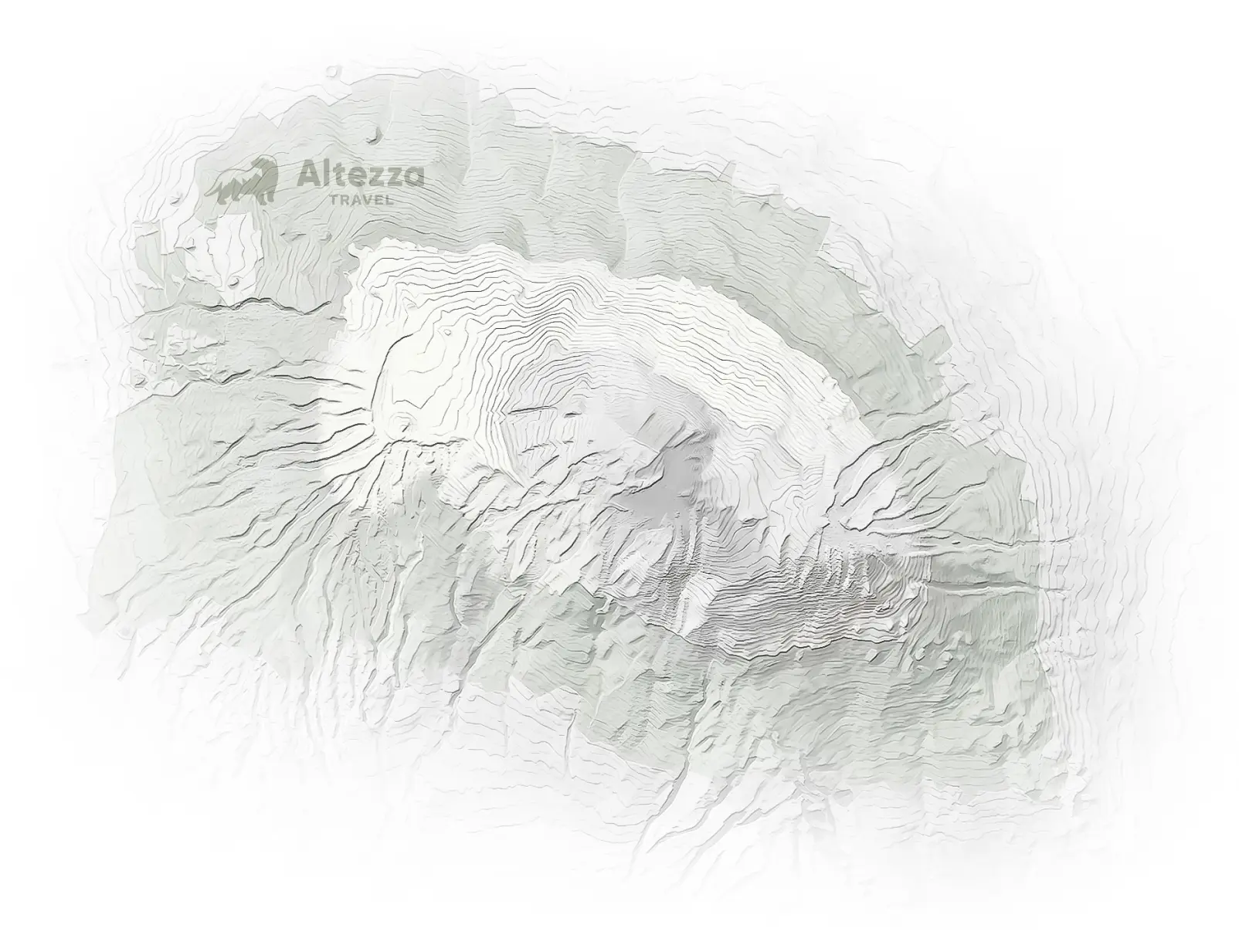

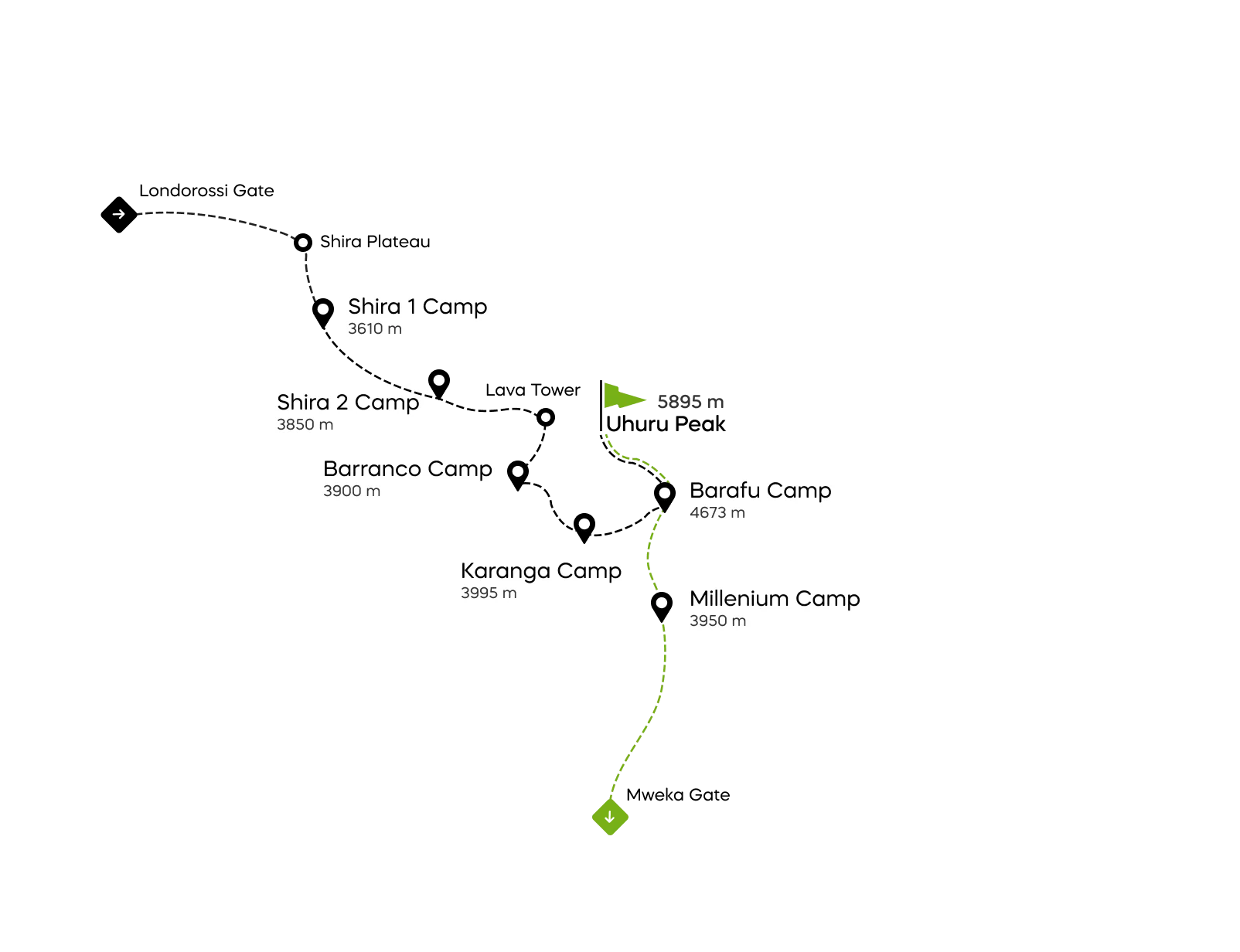
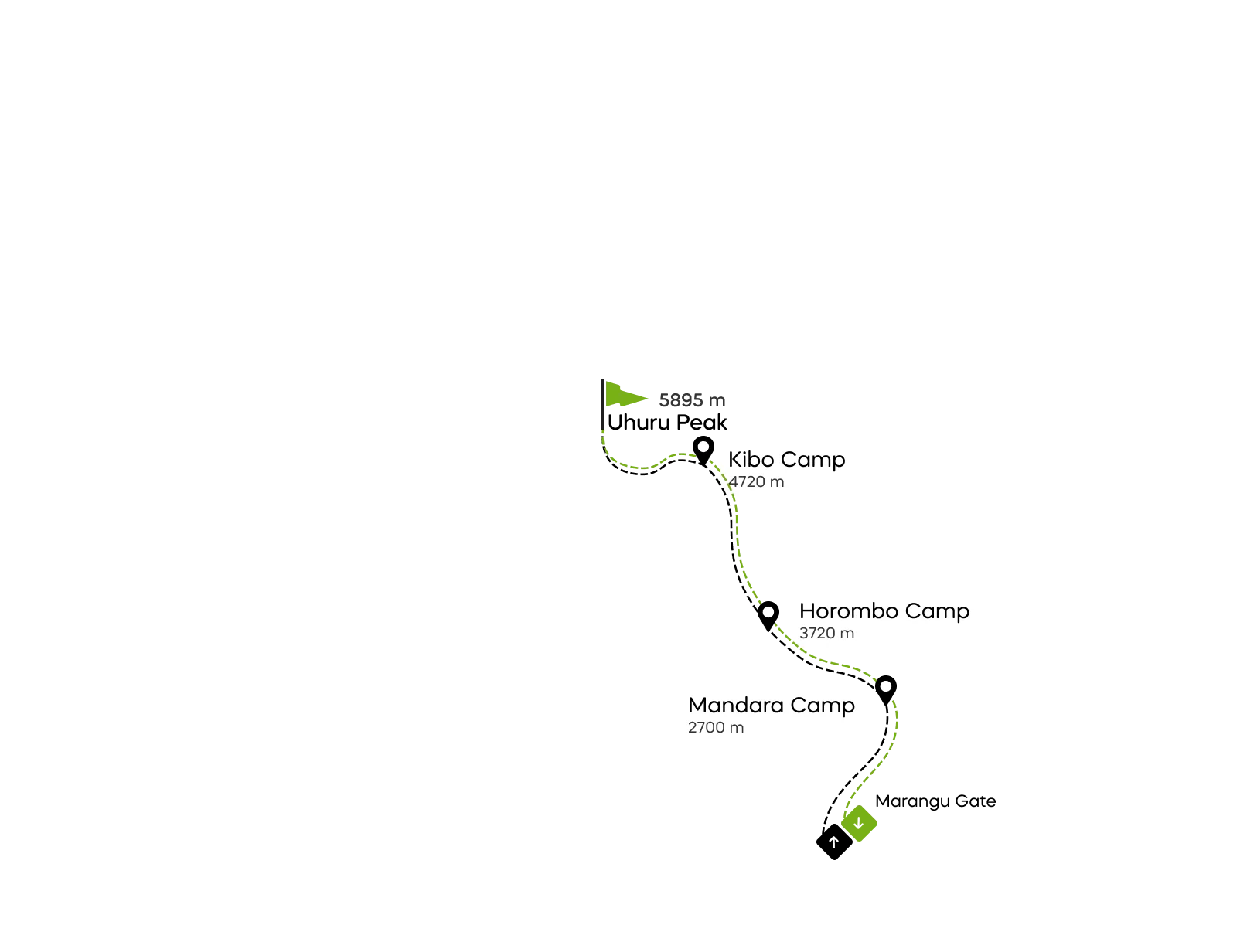



Kilimanjaro climbing groups with Altezza Travel
Altezza offers Kilimanjaro group climbs almost every day. If you have specific vacation dates and can't find a suitable group, contact our managers. We may consider opening a new open group beginning on the dates you suggest. To sign up for a trip, we require a $100 deposit only.
Facts to know before your Kilimanjaro hike
Popular questions about Kilimanjaro
Mount Kilimanjaro National Park is in northern Tanzania, East Africa. It is just three degrees south of the equator. While some of the most iconic panoramic shots of Mt. Kilimanjaro have been captured from the Kenyan side, all trailheads lie in Tanzania. Therefore, tourists can only climb Mt Kilimanjaro in Tanzania. The closest airport is Kilimanjaro International Airport.
Many Kilimanjaro expeditions begin in Moshi, the capital of the same region.
Late December to early March and mid-June to late October are the best times for a Kilimanjaro climb. This is when the Kilimanjaro weather is nearly ideal.
Although other months have rain, it doesn't mean there are constant heavy showers. Typically, rains begin in the latter half of the day. This allows trekkers a significant window of clear weather every day during the rainy season. There are also days without any rain. Altezza offers discounted climbs during the wet season.
You may read more about the seasons of Kilimanjaro.
Uhuru Peak, the summit of Mount Kilimanjaro, stands tall at 5,895 meters (19,341 feet). Yet, this doesn't mean you'll be starting your climb from the very base. Most hotels near Kilimanjaro are at an altitude of 700-1,000 meters above sea level. The trailheads begin at elevations of 1,600 meters and above.
Due to its altitude, Mt Kilimanjaro is among the few places in East Africa to see snow. The snow-capped peak of Kilimanjaro is truly a sight to behold!
We believe that after seeing it, Ernest Hemingway decided to name his famous story "The Snows of Kilimanjaro." The title refers to the distant peak of Mount Kilimanjaro. It represents the unattainable, and the purity of idealist motives. In the story's conclusion, the protagonist dreams of being taken to the summit of Kilimanjaro, symbolizing redemption.
The time it takes to climb Kilimanjaro depends on the route chosen. Most expeditions last 6 to 8 days. An experienced hiker with prior acclimatization usually climbs Kilimanjaro through an accelerated 5-day program. If you stay overnight in the crater, Kilimanjaro climbs can take 9 days or longer.
Among the Seven Summits, the Kilimanjaro trek is one of the shortest. For example, climbing Mount Everest takes 6-9 weeks, Denali and Aconcagua- 2-3 weeks. Kilimanjaro takes about one week only.
As of 2023, a comfortable and safe 7-day group climb costs about $2500-2700. A shorter 5-6-day adventure or a season-discounted trip comes at $2000-2300. This amount includes the park entrance fees, which make up about 40% of the total trip cost.
Any trekking companies offering below this amount should warrant caution. You may get low-quality guides and bad equipment. Such trips often lack medical kits and oxygen tanks, putting your safety at risk.
Also, low prices always correlate with the mistreatment of porters. None of those operators is a member of the KPAP. The crews of budget operators are often underpaid and poorly fed, putting their and hikers' safety at risk.
Climbing Kilimanjaro is subject to the regulations of the Kilimanjaro National Park. The official rules dictate that a local guide must accompany all hikers. Rangers at the park will not permit entry to anyone without a professional Kilimanjaro guide.
Also, venturing up to the Roof of Africa solo involves certain risks. During the summit night in the peak zone, one may succumb to altitude sickness or get injured. If needed, the guides will assist with evacuations and other emergencies.
Finally, climbing Kilimanjaro is more than merely a physical challenge. You'll go on a rich cultural journey with your guides. You will learn about Kilimanjaro's plants, animals, and history. The guides will also share vibrant stories of the communities living in its shadow.
Anyone planning to climb Kilimanjaro should keep the park entrance fees in mind. As of today, they come at $140 per day per hiker. This amount includes several types of fees:
- 'Conservation fees' are for staying in the National Park and enjoying its nature.
'Camping fees', or 'hut fees' on the Marangu route. - The fees for pitching the tents or sleeping in the Marangu wooden cabins in the park.
'Crew fees' - there is a small charge for each crew member entering the National Park to support you on the trek.
'Rescue fee' - this is a sort of mandatory 'insurance' payment. The hikers pay it to use the Kilimanjaro rescue cars. Please keep in mind that this is not a substitute for a real insurance package.
Don't worry about the park fees when planning your trip. Tour operators include them in the tour price and we will pay them to the park authorities on your behalf. Climbing Mount Kilimanjaro with Altezza you can be sure that we will take care of every detail.

Preparing and training for Kilimanjaro
Maintaining a reasonable level of fitness is crucial to climb Kilimanjaro. However, summiting Kilimanjaro doesn't require athletic prowess. A healthy average would be adequate. As a guideline, we suggest assessing whether you can comfortably hike 8-10 km (5-6.2 mi). If you can do it, then you are fit enough to climb Mount Kilimanjaro.
A great exercise for hiking Kilimanjaro is running. Keep training until you can confidently jog 4-5 km (2.5 - 3.1 miles). Good training programs are available at the Nike Running Club app.
Swimming is an excellent complement. Swimming strengthens your entire body and improves your heart and lung endurance. This makes it a great addition to running. The first primarily focuses on leg endurance. Swimming takes it further by engaging the arms, core, and legs at the same time. Water buoyancy is also good for people who want to protect their joints while exercising.
Finally, it is great if you have any rural areas nearby with rough hiking trails. Aim for longer ones, ideally in the 10-15 km (6-10 mi) range. Remember, most of the Kilimanjaro hike will be uphill. So, training over longer distances in the countryside will prepare you for the Roof of Africa.
You may also check our Kilimanjaro training plan. It's useful for building your stamina and fitness for the climb.
Fit climbers often hike Kilimanjaro too quickly. They don't take enough time to acclimatize at lower elevations. Many reach camps faster than the rest of the group. The fast pace increases their risk of getting mountain sickness.
Climbing Kilimanjaro preparation goes beyond physical fitness. It's also a test of discipline and a steadfast commitment to the acclimatization plan.
Tanzania has two rainy seasons and two dry seasons. The short rainy season begins in early November and lasts until late December. It is followed by the dry season, which lasts until mid-March. Then the season of long rains begins, ending in mid-June.
You should consider the northern slopes to climb Kilimanjaro during the rainy season. According to the data we received from the Tanzania Meteorological Authority, this part of the mountain receives five times less rainfall. Good Kilimanjaro routes to choose from are Rongai, Northern Circuit, and Marangu.
One should also remember that the period from June to October in East Africa is marked by cold nights. At the high altitudes of Kilimanjaro, the nights will be pretty chilly. Make sure you have everything from our packing list.
On a Kilimanjaro trek with Altezza Travel, every climber receives a balanced diet designed specifically for the mountain environment. Our specialized menu is rich in calories and carbs to provide you with ample energy.
For breakfast, we serve porridge, pancakes, fruit, eggs, sausages, and toast with jam. Lunch or dinner options include delicious soups like butternut, tomato, leek, vegetable, and beef, potato dishes, spaghetti, chicken, stews, fresh vegetable salads, and avocado. All meal courses are served with delicious sauces and dressing. For dessert, we have mangoes, bananas, pineapple, and oranges. They give you important vitamins and minerals. Coffee and tea are always available in the camp.
We also have extended meal plans for vegetarians, vegans, and gluten-free climbers. We will do our best to accommodate other diets also.
Throughout the trek, our guides will frequently pause for tea with biscuits. Nonetheless, climbing Kilimanjaro demands considerable energy. Hence, we recommend you bring snacks such as energy bars, dried fruits, and high-calorie treats. It's preferable to purchase these at home. There might be a much broader variety of such products available in your country compared to Tanzania.
At Altezza Travel, we've conducted an in-depth analysis and examined the data from January 1, 2023, to September 30, 2023. We looked at the records of over 40,000 climbers.
Our findings revealed that starting your trek on a Wednesday or Thursday reduces the crowds you will encounter. There are almost twice fewer climbers starting on these days compared to the rest of the week.
Additionally, we discovered that the Rongai route has eight times fewer climbers than the popular Machame route. Thus, by hiking Mount Kilimanjaro on Thursday and opting for the Rongai route, you'll encounter nearly 16 times fewer climbers on your way to Uhuru Peak.
What should I pack for a successful summit?
We offer tents, thick sleeping mattresses, tables, tableware, chairs, and other equipment. However, you must bring your own hiking gear. This includes boots, a sleeping bag, duffle bags, pants, trekking poles, and other items from the packing list.
When you climb Mount Kilimanjaro, the temperature changes a lot. It can be as hot as 25°C/77°F and as cold as -15°C/5°F. It is essential to bring clothes for all kinds of mountain weather.
If you want to travel light or don't want to buy gear, you may rent equipment from Altezza Travel. We have an extensive inventory of quality gear in prime condition.
Check our Kilimanjaro Packing List to learn everything you need to know
 Get PDF
Get PDF
Kilimanjaro Guides
50+ expert Kilimanjaro guides work for Altezza Travel
Our lead guides have a lot of experience across all Kilimanjaro routes. All are certified as Wilderness First Responders. They are a great company to climb Kilimanjaro with.
Professional Guiding Crew
Kilimanjaro Hiking Routes

This trail is one of our favorite Kilimanjaro routes. It starts on the beautiful western side of the mountain. On Lemosho, one may see amazing views of the Shira plateau.

Rongai is a great option for exploring the northern side of Kilimanjaro. It offers a more private experience and amazing views of the Mt Kilimanjaro summit. We recommend it for the rainy seasons.

The Machame route is the second most popular of the Kilimanjaro climbing routes. It offers good acclimatization and great views on the way to Uhuru Peak.
Questions about Kilimanjaro safety
Altezza Travel recommends Global Rescue, known for reliable reimbursements. Your coverage should include three important things. These are high-altitude hiking up to 6000 meters, helicopter evacuation, and medical services.
In order to acclimate and summit successfully, we recommend following these simple rules:
Hike slowly. Your body needs time to adjust to the lower oxygen levels. By following a moderate pace, you'll enable it to produce more red cells. Those are used to transport more oxygen to the vitals and to increase the breathing rate. Our guides will be monitoring your pace and will help you to correct it if needed.
Drink 3-4 liters of water a day. Staying properly hydrated is essential. Water will be provided by our crew along the trek.
Join our acclimatization hikes. Each day, our guides lead short hikes from the camp to higher ground and then back again. These hikes usually last no more than 2 hours. They help a lot with getting used to the altitude. We suggest everyone takes part.
If you have time, consider climbing Mount Meru before your Kilimanjaro trip. Those close to South America will have many options for similar hikes. For example, on the Inca Trail. Climbing other lower mountains around the world can also be fantastic. It will help you get used to higher altitudes, preparing you for the Kilimanjaro journey.
Lastly, if you choose routes that are seven days or longer, your body will have more time to adjust. This will improve your chances of reaching the summit.
To acclimatize better on Kilimanjaro, the best routes are Lemosho, Machame, and Rongai. Consider them, or other itineraries with seven days and more.
On the seven-day Machame route, you won't need any extra acclimatization days. Equally good options are Rongai and Lemosho. These are the main routes we use for most of our trips. However, if you think you're not very physically fit, you may add one or two days for extra rest.
At the summit of Kilimanjaro, the level of oxygen in the air is roughly half of what it is at sea level. Most climbers can reach Uhuru Peak without using extra oxygen.
Yet, to be on the safe side, we take precautions. On our expeditions at Altezza Travel, we always have plenty of oxygen tanks. The cost of oxygen is included in the tour price.
We have 300+ oxygen tanks ready for our expeditions, more than all other operators combined. In an unlikely scenario, if your group needs extra oxygen, we will send it from our base. The neighboring Altezza groups on the mountain are also ready to share theirs. Hiking Mount Kilimanjaro with us is always safe.
During climbing Kilimanjaro expeditions, Altezza Travel teams carry comprehensive medical kits. On the hikes, we use smaller tactical kits. They contain everything needed to treat injuries, scratches or twisted limbs. Our camp's larger medical kits have medicines for common problems on a Kilimanjaro climb. Such as for nausea, headaches, vomiting, and stomach issues. Also, we have lots of oxygen ready to help you prevent altitude sickness when first symptoms arise.
The situation is different if you take any prescription medication. Better take it with you on your Tanzania trip.
Relative to other mountains, Kilimanjaro has a low death rate on all its seven routes. Of the approximately 50,000 individuals hiking Mount Kilimanjaro each year, 3-5 lose their lives. The main causes of these deaths are brain and lung problems due to high altitude and heart attacks. Park authorities say this happens because hikers ignore acclimatization.
The mortality rate for Kilimanjaro porters is notably higher. Each year, 20-25 porters die while being a part of a Kilimanjaro crew. The most popular reason is pneumonia, caused by a lack of proper gear or shoddy tents. Responsibility for this largely lies with super-budget trek operators.
To end the mistreatment of porters, always choose a KPAP-registered company when climbing Kilimanjaro. This organization makes sure that operators treat their crew fairly by paying good wages and providing everything they need for safe working conditions on Kilimanjaro. You may learn more in our video about our involvement in the KPAP work.
In the 10 years that Altezza Travel has been operating, we've guided over 20,000 climbers to the summit. We haven't had a single fatality. In addition, we are a proud member of the Kilimanjaro Porters Assistance Project (KPAP) and regularly donate funds to them.
The highest peak of Kilimanjaro was named Uhuru Peak to celebrate Tanzania's independence from Britain in 1961. "Uhuru," means "freedom" in Swahili.
Tanzania has famous destinations for any kind of African adventure. The most popular destinations are Serengeti National Park and Ngorongoro Crater. It is undoubtedly a great idea to plan a safari before or after the climb. We have a fleet of new safari cars and a team of highly professional safari driver-guides who will your safari truly unforgettable!
Kilimanjaro climbing Base Camps

In Tanzania's context, a base camp is a place from where the climbers make their summit attempt. While most mountains only have one, Kilimanjaro is unique. It has four. Barafu Camp sits on the south slope, at 4,673 meters. It's the base camp for Lemosho, Machame, and Umbwe trekkers. Climbers on the Marangu route use Kibo camp. It sits higher at 4,720 meters (15,485 feet) on the eastern side.
The School Hut summit camp is for climbers using the Northern Circuit and Rongai routes. Because of that, it is one of the less frequented summit camps on Kilimanjaro.
There is also the Kosovo summit camp, positioned slightly higher than Barafu. Its position makes it easier for the final push to reach the summit.
Altezza Travel - a responsible operator of Kilimanjaro climbs
Altezza Travel is a Tanzania-registered tour operator. We live, work, and pay taxes in this country only. Our commitment to Tanzania extends to impactful social responsibility initiatives. Our team regularly plants trees on Kilimanjaro, fights bushfires, and protects wildlife on the mountain.
We are also the largest tourism employer in Kilimanjaro. There are over 300 people in our office and hotel teams. Our Kilimanjaro crew is 1500+ people strong and keeps rising annually. We are proud to attract the best talent in the region by offering the best working conditions and pay.
Feel free to contact our team for comprehensive advice about Kilimanjaro. We are here for you.
See you in Tanzania!
Updates from Kilimanjaro from our clients
Altezza Travel runs 15% of all expeditions on Kilimanjaro










 View Sample Kilimanjaro Itinerary
View Sample Kilimanjaro Itinerary  Chat on WhatsApp
Chat on WhatsApp 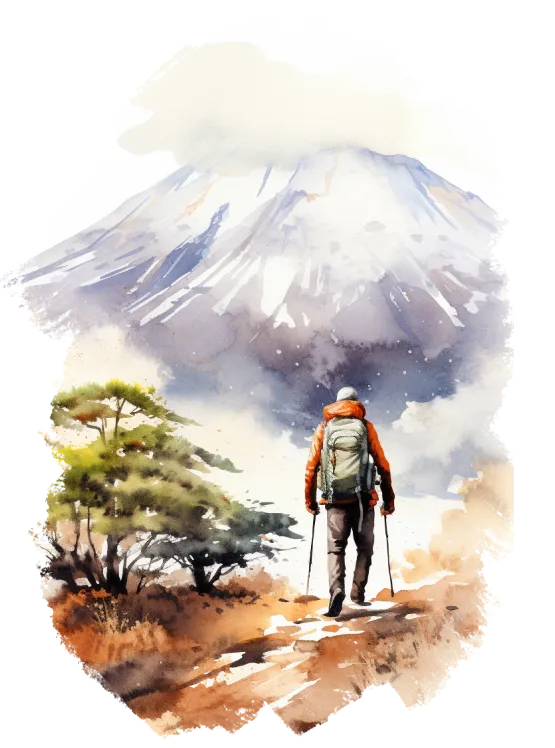

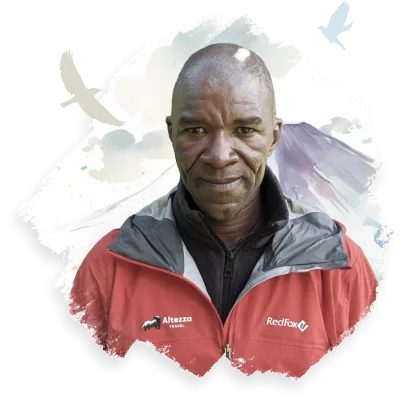
 10+ years of Experience
10+ years of Experience  Wilderness First Responder
Wilderness First Responder 
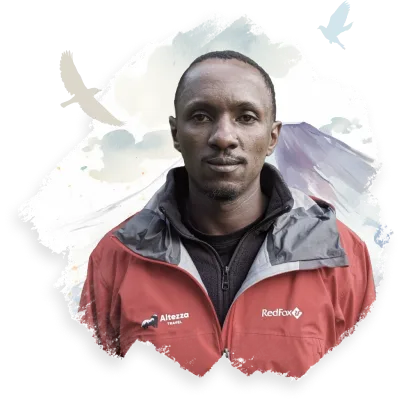

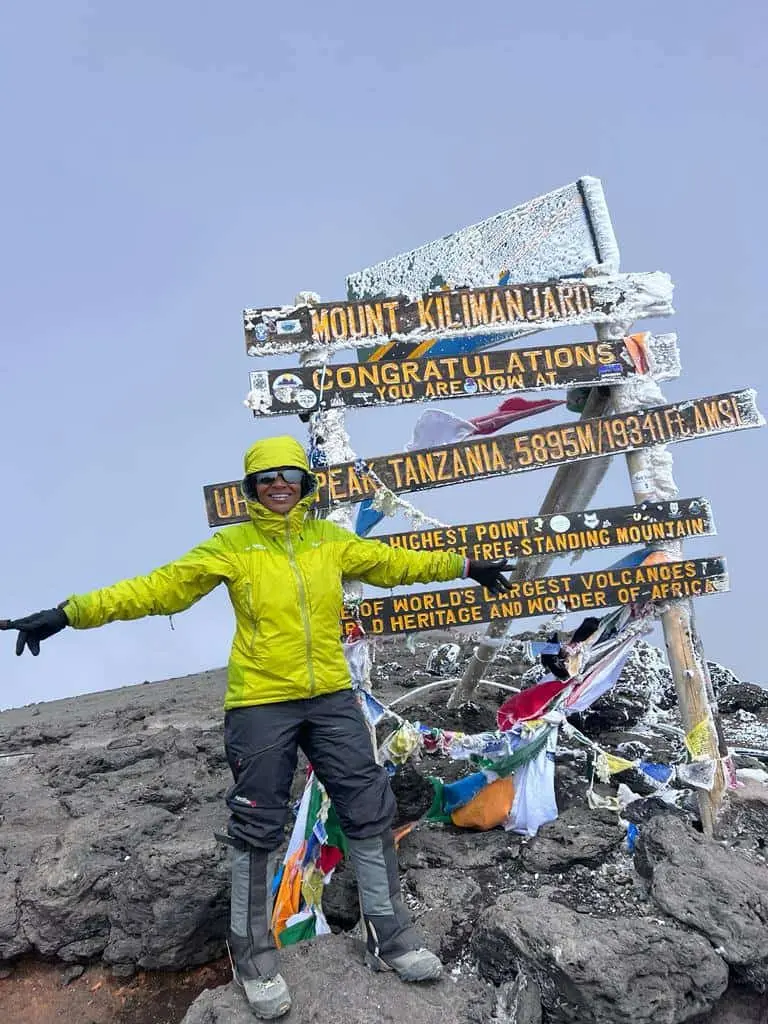

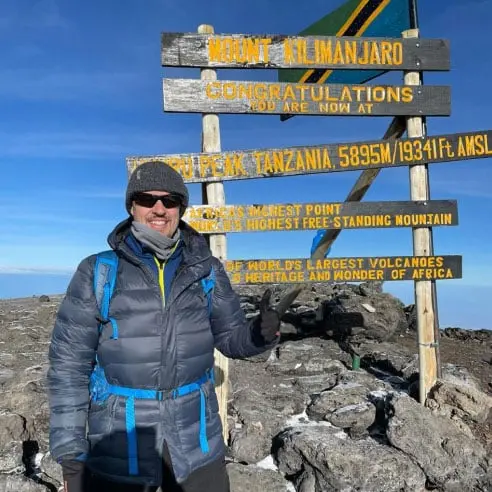
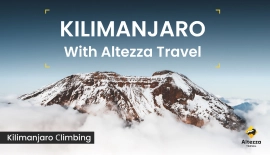

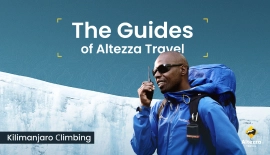
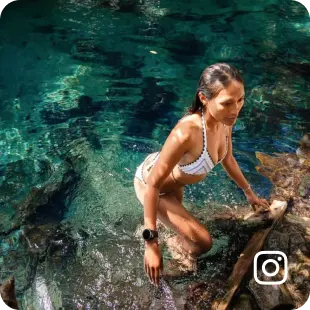
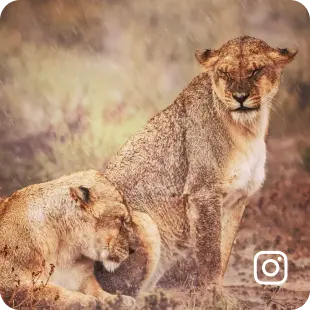
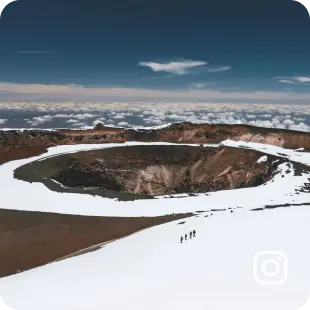


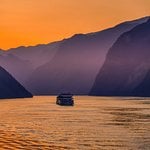



On every route, there are stationary toilet facilities at the camps, but we highly recommend renting a portable toilet to improve the comfort of your expedition. Many of our guests say that this was their best investment ever :)
As for the stationary shower, it's available only on the Marangu Route, but it's a cold shower. You can rent a portable shower from us that comes with hot water. It's allowed to be used on any route, except Marangu.
Thank you for your question! We offer two types of expeditions - private and groups. You can visit our YouTube channel to learn more about the difference - https://www.youtube.com/watch?v=7SSaFpWW0OU. Our join-in groups typically consist of around 12-15 people during peak season and 4-6 during the low season. Regarding the pace, you don't need to worry. Our guides hike at a very slow and comfortable pace. However, if you prefer to go faster or slower, the group can easily split up so that everyone can walk at their own comfortable pace.
Greetings! If we are a family of three, can we share one tent during the climb?
Hi Marvin!
In our classic expeditions, we use The North Face VE-25 model tents. Although these are designed as 3-person tents, it can be quite cramped with three people and their duffel bags inside. Therefore, we recommend these tents for two people and their baggage.
For our premium climbs, we offer Altezza walk-in tents equipped with beds. These tents also have a standard capacity for two people. However, we do provide a Living Tent option where we can accommodate up to four beds. This is an excellent option for families who wish to sleep together. The only minor drawback is that these larger tents can be a bit more chilly at night compared to the smaller ones.
Hi! It's stated that April is a rainy season on Kilimanjaro, but how many days does it really rain and how heavy is it?
Based on our experience and information from the Meteorological data of Tanzania, it rains almost daily in April and can be quite heavy. If this is the only month you can climb Kilimanjaro, we would advise choosing the Marangu route, where you can overnight in wooden huts, or the Rongai route, where there is three times less rain than on the southern routes